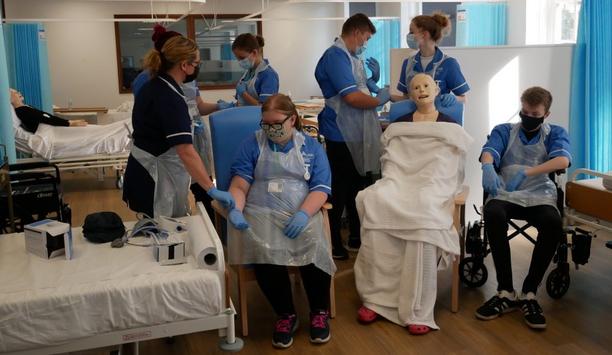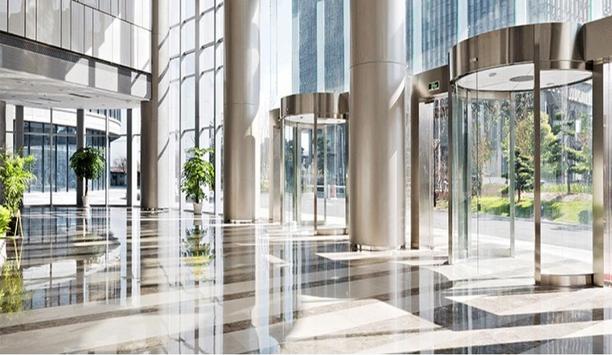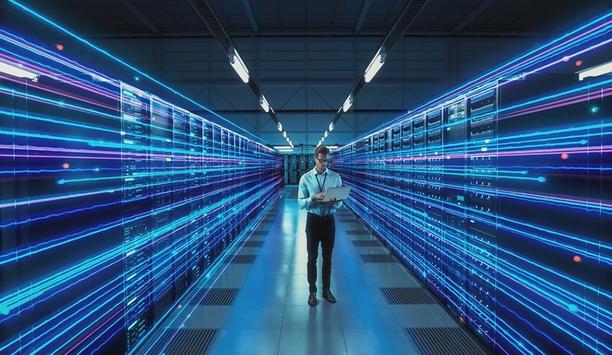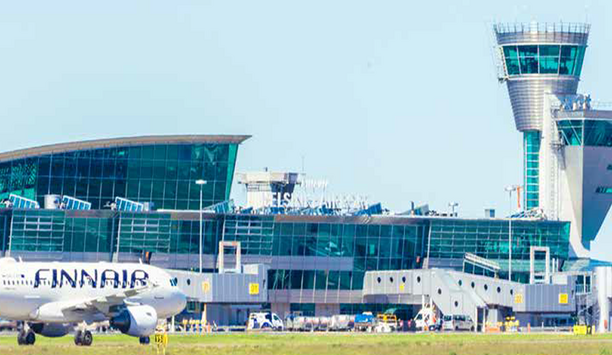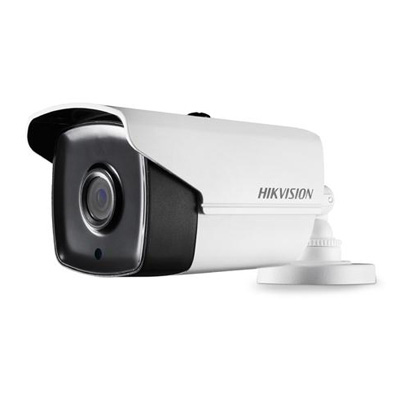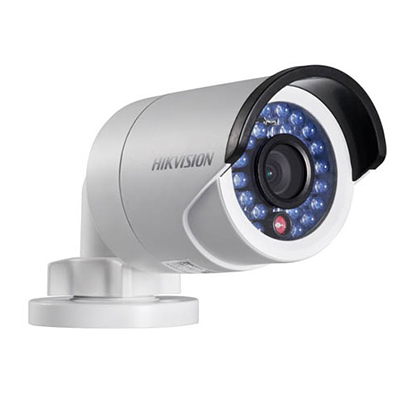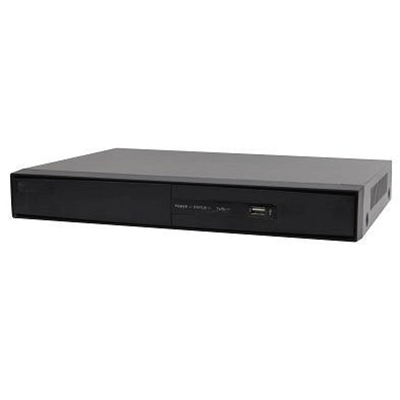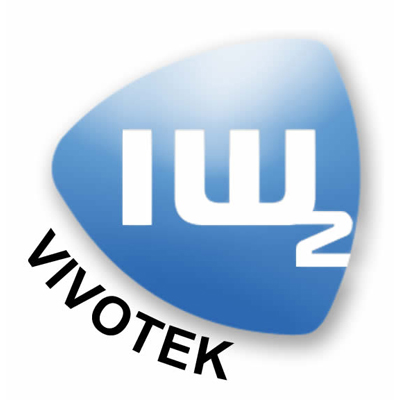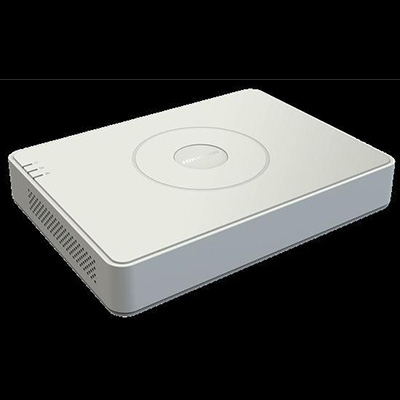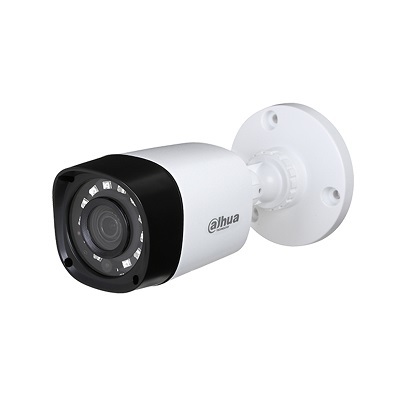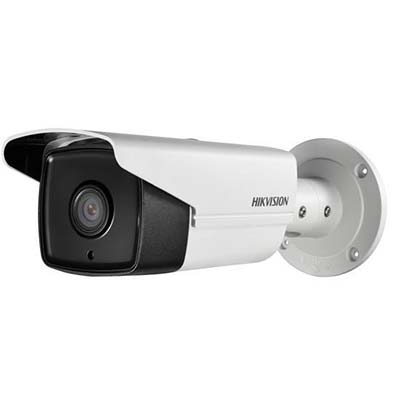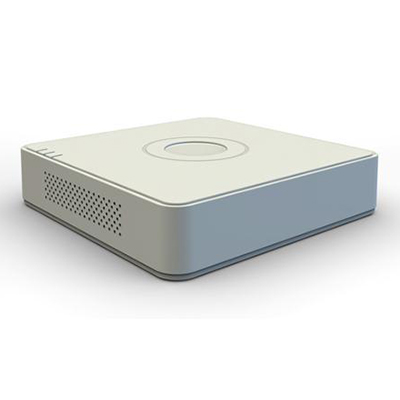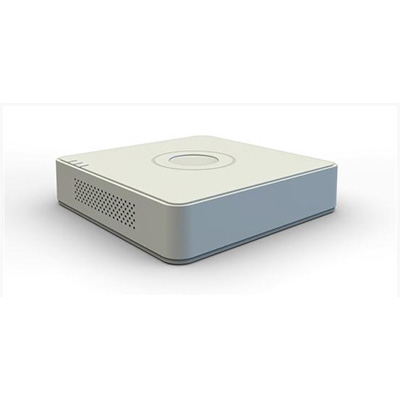Remote monitoring security applications
Dahua Technology Indonesia has donated a Dahua DeepHub Smart Interactive Board to the Faculty of Economics and Business (FEB) at Universitas Gadjah Mada (UGM), demonstrating the company’s commitment to supporting the advancement of education in Indonesia. The Country Director of Dahua Technology Indonesia, Royce Ouyang, expressed his gratitude for this charitable opportunity during the handover event held at the Alumni Hall of FEB UGM on March 14. Royce Ouyang said, "We are pleased to co...
The Middle East has recently expanded its real estate market as the region's economy grows and urbanisation accelerates. This trend has led to an increasing demand for smart security, and the pace of digital intelligence change is gradually increasing. The security industry in the Middle East is rapidly growing, driven by the government's strong emphasis on national security and terrorism prevention. Centralised systems management Significant attention and investment have been directed towar...
Wetlands, the "kidneys of the Earth", are considered one of the three major ecosystems on Earth, along with forests and oceans. Hosting a diverse range of terrestrial and aquatic plant and animal species, wetlands serve as crucial habitats for numerous bird species. Red-crowned cranes Beautiful Wetlands vs Critically Endangered Cranes The Red-crowned Crane is considered as the "God of Wetlands" and is highly sensitive to environmental changes. It is one of 14 bird species in China classified...
Located in the city of Gualeguaychú in Argentina, Carnaval del País is a festive season that runs for two whole months, holding the world record as the longest carnival in the world. It is full of lively events featuring energetic samba dancers dressed in sequins and feathers as well as parades of colourful and beautifully crafted floats. To accommodate the event, the city built its own Sambadrome called the Corsódromo, the first of its k...
Security office in commercial and residential building requires state-of-the-art solutions that can keep up with the demands of modern surveillance and threat detection. With space-efficient design, high-performance processing, coupled with advanced data protection, NVR NViS 5704, a powerful video analytics solution, enable seamless surveillance operations and enhanced security measure in edge AI applications. These capabilities empower security office to efficiently monitor and analyse video...
Makita, one of the world's renowned manufacturers of cordless, electric, and garden tools, has opened a completely new headquarters in Banska Bystrica, Slovakia. At this location, Makita stock and distribute batteries for cordless tools plus run wholesale supply logistics from their warehouse. Single, intuitive system At a facility like this, simplicity and clarity for both security managers and daily site users were essential. They demanded a single, intuitive system to control every ac...
News
Over the years, Dahua has continuously invested in the development and innovation of Full-colour technology to solve the monitoring challenges brought by low illumination. In 2018, the company launched the Starlight and Starlight+ technologies which enable cameras to effectively capture colour details in low-light environments. 24/7 colour monitoring Focusing on further improving low-light monitoring, Dahua officially released the Full-colour concept in 2020, realising 24/7 colour monitoring by introducing F1.0 super aperture, 1/1.8 '' high-performance sensor for large targets, and Dahua’s self-developed ISP 4.0 technology. The colour information of key targets in the scene can be captured even at night, which can be used as evidence in case of an investigation or backtracking. Dahua Full colour 2.0 technology Dahua TechMonth showcases some of the integrations of Full-colour technology for customers and end users In 2021, the company continued to upgrade its technology and launched the Dahua Full colour 2.0 technology. It further expanded the Full-colour “family” and integrated 4K, panoramic, zoom, and other technologies to facilitate the development of high-end products, provide a more comprehensive product system, and enhance low-light surveillance. To elaborate more about this remarkable technology, Dahua TechMonth showcases some of the integrations of Full-colour technology that create more business value for customers and end users. Recap of solutions Following is a short recap of these amazing solutions: Full-colour + TiOC The TiOC (three-in-one camera) has 3 main features: Smart Dual Illuminators, Active Deterrence, and AI. It can effectively warn off intruders with active deterrence, and notify users in time with real-time alarm, providing pro-active video surveillance to properties that require 24/7 security. TiOC utilises Full-colour technology to capture colour footage in dark scenarios. Also, its smart exposure technology realises time-sharing control and prevents the interference of flashing red & blue light in the image. To see TiOC in action, check out this video. Full-colour + Panoramic The Dahua Full-colour Dual Lens 180° Panoramic PTZ & IPC devices are equipped with dual sensors that deliver a 180-degree field of view. After the right and left lenses to capture an image, the camera calculates the feature values of the left and right images to avoid warping and pixel loss using standardised image correction technology. The Dahua advanced pixel-level metadata fusion algorithm then enables seamless splicing of the image, resulting in a seamless 180° wide-angle image. Panoramic IPC The Panoramic IPC offers EPTZ that provides a panoramic image of the scene, as well as sub-images that focus on specific areas or targets. For the panoramic PTZ camera, both panoramic and detailed views support AI functions and can be independently deployed in different directions to cover wider areas. Full-colour + ZOOM The motorised varifocal lens of the upgraded Dahua Full-colour 2.0 network cameras has approx. 5x optical zoom capability and auto-focus function, providing clear colour details of the monitored scene even after zooming in. With its long-distance illumination capability, the camera can also capture a clear full-coluor image even from far distances. Full-colour + 4K The Dahua Full-colour 4K camera delivers enhanced colour images and surveillance footage 24/7. It adopts a 1/1.2” image sensor (currently Dahua's best low-light IPC sensor) that provides a 110% pixel size increase compared to a common 8MP sensor. Its F1.0 large aperture can capture more available light and the maximum light energy that the sensor can receive is increased by 2 times. Success Case: Schwarze Berge Wildlife Park Located in Rosengarten Germany, the Schwarze Berge (Black Mountains) Wildlife Park covers an area of about 50 hectares. It is home to nearly a thousand of animals from approximately 100 species grazing in Europe. The administration of the park was looking for a comprehensive camera system that can perform many tasks. “We chose Dahua because it customised a complete solution to meet all our needs,” says Arne Vaubel, Managing Director of the Schwarze Berge (Black Mountains) Wildlife Park. Full-colour and thermal imaging In this project, a full series of innovative cameras equipped with key technologies" “In this project, a full series of innovative cameras equipped with key technologies, such as Full-colour and thermal imaging are adopted." "We are glad to see that through our cameras, the park can monitor the living environment and health status of wild animals at any moment without disturbing them, which also helps the park realise efficient operation and management,” explains Kai Wockenfuß, Pre-Sales Support Technical Engineer of Dahua Technology GmbH. Fixed-focal Warm LED Bullet WizMind Network Camera One notable Dahua camera deployed in the park is the 8MP Full-colour Fixed-focal Warm LED Bullet WizMind Network Camera. It is equipped with a high-performance sensor and large aperture lens, enabling it to capture clear colour images when it’s dark or during the night. With its photosensitivity technology, the camera can capture more available light and display more colourful footage of the monitored scene, providing 24/7 monitoring of the wildlife in the park. The future of Dahua Full-colour technology With the success of Dahua Full-colour in the market, what does the future holds for this amazing technology? For starters, minimising white light pollution is at the top of the list. Some cameras with full colour capabilities in the market still use white light, which can affect the human eye and cause severe light pollution in the monitored scene. Touchless Full-colour cameras are one solution that Dahua has been exploring through its multi-spectrum algorithm. The Dahua Multi Spectrum Fusion technology extracts the details and brightness of the visible spectrum and infrared spectrum to make the fusion brightness close to the visible light brightness, which then enables the camera to provide better images. AI integration Another aspect that Dahua is focusing on is the deeper integration of Full-colour with AI Another aspect that Dahua is focusing on is the deeper integration of Full-colour with AI. Full-colour technology is continuously being upgraded, and with that comes more intelligent solutions that can realise clear HD images at night, like it is during day time. The TiOC, for example, combines Full-colour, AI, and Active Deterrence (warning lights and siren) into one comprehensive solution, realising a closed-loop system that involves early warning, active deterrence, and backtracking. It has been recognised by many authoritative organisations in the industry and even received distinctive awards. Intelligent analysis and computing What’s more, with the constant development of this technology can enable Full-colour imaging to be directly applied to intelligent analysis and computing. It will become a mainstream technology that everyone can avail and use to optimise their scenarios, which is in line with Dahua’s mission of “Enabling a safer society, and smarter living.”
More than one million electric vehicles are registered in the U.S.—and they all have to plug in somewhere. As EV charging stations pop up across the country, one of the chief questions will be how charging station users are identified, authenticated, and connected with membership or payment systems. Radio-frequency identification cards and tokens and smartphone authentication apps have emerged as two viable options for EV charging authentication. Which is best? It may depend on the user base they plan to serve. User authentication for EV charging Most electric vehicle owners have a spot to plug in while at home, either in their own garage or carport or in a designated charging spot in a tenant parking garage. But electric vehicles also need spots to charge while owners are out and about. The EV charging market is broadly divided into two tiers: Level 2 charging stations, which operate at 208-240 V and use AC power. These stations will add 20-25 miles of range in about an hour of charging. The U.S. Department of Transportation listed more than 22,800 public Level 2 EV charging stations across the nation as of mid-2020. They are commonly found in public parking lots and garages, hotels, grocery stores, malls, and other commercial areas. They may also be installed in private parking garages and business parking lots for use by tenants, employees or fleet drivers. Collecting membership data Direct Current Fast Chargers (DCFS) are designed to charge an EV battery to about 80% in 20-30 minutes. There are currently about 15,000 DCFC stations across the U.S., but their numbers are expected to explode as more people start taking EVs on longer road trips. They are commonly found along major interstate highways. As the market evolves, user authentication requirements for EV charging stations are likely to vary by type, location, and user base. Some commercial locations may provide Level 2 EV charging as a free amenity to shoppers, guests or employees. If there is no charge for the service, there may be no need to authenticate users at all— people can simply park and plug at any available spot. However, there may be a benefit to collecting membership data (e.g., shopper reward club). Private charging stations Public, for-profit EV charging stations, like gas stations, need a method to collect payment for their services. In some cases (especially at roadside DCFS stations), users may simply pay for the minutes used with a credit card—just like at the gas station pump. However, many EV charging station users are already accustomed to identifying themselves with an RFID membership card or a smartphone app. Charging networks like ChargePoint and Blink enable members to access any EV charging station within their networks with a card or smartphone app, which connects to their membership, account, and payment information. Private charging stations—such as those offered to tenants, employees or fleet drivers—may not require payment but need to ensure that only authorised drivers are accessing power and taking up valuable parking spots. An RFID card or smartphone app can be used to identify authorised drivers and track charging behaviours. Moving forward, many EV charging stations may find that they need a mix of options for users, including membership cards, smartphone apps, and a credit card payment option for out-of-network drivers. Choosing between RFID and smartphone apps In the long run, the answer may be ‘both.’ RFID cards are economical and easy to issue When user identification and authentication are desirable, which is the better option: RFID cards or smartphone authentication? Both have their uses in the EV charging market. In the long run, the answer may be ‘both.’ RFID cards are economical and easy to issue. And for some users bases, they may not have to issue a new card at all—they can take advantage of an RFID card they already carry. In many cases, it is possible to leverage existing employee IDs and membership cards for access to privately controlled EV charging stations. RFID membership cards may be a good bet for: Fleet drivers who already carry an RFID card for vehicle access. Employee parking lots and garages where people already use a card for entry. EV charging parking spots at gyms or other locations where users want to limit charging access to active members. EV charging stations Most consumers would prefer not to have to carry a physical membership card for every retail outlet On the other hand, public charging stations may find that consumers would prefer to use a smartphone app rather than receive another membership card to carry in a physical wallet. Many consumers prefer to carry only their phone and one or two essential cards (such as a driver’s licence and a single credit or debit card). As more retailers enable consumers to pay via a digital wallet app on their smartphones, some don’t even carry a physical credit card anymore. Most consumers would prefer not to have to carry a physical membership card for every retail outlet they visit—and that includes EV charging stations. Smartphone apps for user authentication are simple to set up and highly secure. Instead of RFID, they typically use either Bluetooth® Low Energy (BLE) or Near-field Communication (NFC) protocols. Public charging stations For the user, the experience is almost identical to RFID authentication, except they wave a smartphone over the reader instead of a card. Apps have other user benefits, too. A custom app for EV charging can be configured to help users locate or reserve charging stations, check their balance and usage history, and change their payment options right on their phone. These features make smartphone authentication ideal for consumers These features make smartphone authentication ideal for consumers accessing a network of public charging stations. However, EV charging network managers should keep in mind that some users may still want a physical membership card. Smartphone-based authentication There are still some user populations, such as older consumers and those from lower income brackets, where smartphone ownership is not ubiquitous. If users are primarily using EV charging for a fleet vehicle, they may not want to download an application for work on their personal cell phone. Other users may find smartphone apps confusing or simply prefer to have a card for other reasons. The answer for both public EV charging networks and private charging station owners is to have an RFID reader that is capable of both card-based and smartphone-based authentication. This will provide maximum flexibility as user preferences change. Finding the right RFID reader for EV charging The ELATEC TWN4 MultiTech family of readers is ideal for authentication at EV charging stations The best RFID reader for EV charging is one that is flexible enough to meet the needs of all user populations and evolve as requirements change. The ELATEC TWN4 MultiTech family of readers is ideal for authentication at EV charging stations. The readers support 60+ RFID transponder technologies along with BLE and NFC smartphone authentication. This means that one reader can support all common technologies already in use across the entire user base—both nationally and internationally. This capability becomes important for applications where users want to enable drivers to use an existing RFID card (such as their employee or fleet ID card or an access card for a tenant parking garage) for access to charging locations. It also provides more flexibility as technologies or preferences change in the future. Supporting advanced encryption TWN4 MultiTech supports advanced encryption and security configurations for highly secure transactions between the card or smartphone and the reader. This is important for EV charging applications tied to payment or employee/driver identification. ELATEC readers are mobile-ready. The ELATEC Mobile Badge BLE NFC App offers simple and effective components for building or extending a mobile application for EV charging networks. Non-managed mobile credentialing using the ELATEC app is free. TWN4 MultiTech readers also work with multiple existing third-party managed credential systems, such as KleverKey, Safetrust, and Transact. The TWN4 MultiTech is easy to customise with the powerful Software Development Kit (DevPack) and App Blaster and Director utilities. Readers can be easily configured to support custom functionality (such as LED light flashing sequences or sounds for user feedback) and integration with backend software for easier member management. The DevPack tools make the TWN4 family the most powerful, versatile, and sustainable readers on the market. Hardware communication interfaces As electric vehicles move from niche to mainstream, EV charging infrastructure will need to grow and evolve to accommodate millions more drivers—both in the consumer market and in commercial fleets. With TWN4 MultiTech, EV charging station managers will be ready. Interested in learning more about technical considerations for RFID? Download 11 Considerations for Embedded System RFID Readers for additional advice, including operating power and consumption requirements, antenna placement, hardware communication interfaces, and more.
Mul-T-Lock has worked closely with K.B.O Fire & Security to upgrade the security at Guildford College, in the United Kingdom (UK), creating a dedicated master key suite for the ultimate peace of mind of staff, pupils and visitors. Guildford College is the largest further and highest education college in the Surrey area, with approximately 3000 students and offers courses at all levels. Success rates are higher than national benchmarks with many students operating with the local community on a regular basis. Control and secure access for Guildford College K.B.O Fire & Security offered a number of innovative ideas to ensure complete security Controlled and secure access is a high priority for the Estates and Facilities team, who sought the advice of K.B.O Fire & Security to undertake a comprehensive security overview. K.B.O Fire & Security offered a number of innovative ideas to ensure complete security and a smooth operating system throughout the college site. Mul-T-Lock’s high security MTL400 patent protected solution The resulting master key suite was designed and installed using Mul-T-Lock’s high security MTL400 patent protected solution, which combines advanced technologies with enhanced key copy control and maximum resistance to all forms of lock manipulation. Sandra Searle, the Facilities Customer Services Manager at Guildford College, said “The college is committed to offering staff and students a vibrant, happy and nurturing learning environment. So that we can do this as safely as possible, we ensure the security systems, right from the entrance to the college and throughout the site, are all maintained to a high level.” Bespoke Mul-T-Lock master key suite system Sandra Searle adds, “K.B.O Fire & Security worked with us to produce a bespoke Mul-T-Lock master key suite that could enable total key management control. We are particularly impressed with the advanced protection capability as it means as a team, we can maintain a single key to open all doors as required and maintain differential access to rooms between staff, visitors and students.” With up to 90 cylinders installed in a scalable design, the master key suite system was installed quickly and efficiently, in order to ensure minimal disruption to learning timetables. Offering flexibility in access control With Guildford College, we like to consider ourselves as part of this team" Lance Harding of K.B.O Fire & Security stated, “With Guildford College, we like to consider ourselves as part of this team, where we can really understand the bespoke requirements. The benefit of working in this way is allowing for the flexibility of access, including accounting for the large number of part- and full-time students, alongside the wider community, who all use the facilities.” Lance Harding adds, “Here a master key system was the best choice and using Mul-T-Lock enabled total patented key control to keep the college, and all who attend safe and secure.” Mul-T-Lock and K.B.O Fire & Security partnership Tom Hyslop, the Regional Sales Manager at Mul-T-Lock, concluded by stating “By working with the college and K.B.O Fire & Security early in the specification process, the right level of protection could be designed into the master key suite, choosing MTL400 to make sure staff and students can work and learn in a safe and secure environment.” Tom Hyslop adds, “It also meant installation could be planned carefully around learning timetables. And now, staff can focus and maintain their high standards for the benefit of all who attend with total peace of mind security.”
With 400 helicopters deployed for different types of missions, 70 naval systems in use, as well as military and civil aircraft, air traffic control radar and space solutions, Leonardo confirms its commitment to Latin America by showcasing its latest-generation multi-domain capabilities and technologies at the FIDAE international exhibition in Chile. Leonardo will participate in the FIDAE exhibition in South America, which takes place in Santiago, Chile from 5 to 10 April. The company will display technologies and solutions developed to meet the needs of governments, institutions, armed forces and civil operators in the aeronautic, electronics, helicopter and space sectors. Leonardo presents advanced solutions in the fixed-wing field M-346FA aircraft is already delivered to the first international customer. In the fixed-wing field, Leonardo is presenting the Fighter Attack version of the M-346 and the M-345 Dual Role, which, in addition to being ideal and technologically advanced solutions for training future pilots, also perform a wide range of missions at a lower cost than frontline fighters. In particular, the new operational version of the M-346FA aircraft, already delivered to the first international customer, has all the characteristics of the trainer variant and, through the integration of latest generation equipment and sensors, also becomes an effective light attack aircraft. Leonardo underlining its role as a leader in the helicopter sector FIDAE will also showcase the C-27J Spartan multi-role transport aircraft, already selected by the Peruvian and Mexican Air Forces and used to support those countries’ citizens. Leonardo underlines its role as a leader in the helicopter sector with a complete range of platforms deployed in more than 150 countries worldwide to meet the most complex military and civil requirements. The AW119T helicopter (VFR and IFR) trainer is the only single-engine helicopter in the world fully certified to operate according to instrument flight rules, while the AW139Mmulti-role helicopter is capable of carrying out a wide variety of security and defence missions. Uncrewed solutions of Leonardo The modular avionics system ATOS is able to manage a wide spectrum of sensors on an aircraft In addition to fixed and rotary-wing aircraft, Leonardo will also be at FIDAE with its uncrewed solutions. These include the Falco EVO, which can conduct a wide spectrum of missions on land and at sea, thanks to its innovative sensors and complete solutions for intelligence and surveillance, alongside flexible mission systems. The modular avionics system ATOS (Airborne Tactical Observation and Surveillance) is able to manage a wide spectrum of sensors on an aircraft, combining in real-time the information received about the complete tactical situation, enhancing situational awareness to accelerate and optimise decision-making. Leonardo's contribution to the electronic warfare segment Among key technologies in the field of defence electronics, developed to provide high levels of security in complex environments, Leonardo is presenting the Long Range RAT-31 DL / M digital radar with AESA antenna – an effective mobile system that can detect fast-moving targets, such as ballistic missiles. Leonardo presents RAT-31 DL / M digital radar with AESA antenna – an effective mobile system. In the Electronic Warfare segment, the Electronic Support Measures (ESM) system SAGE is a device that analyses the electromagnetic spectrum across the land, sea and air domains to map the sources of active emissions. It uses highly accurate Direction Finding (DF) antennas to identify the positions of targets. Meanwhile, among the latest generation of protection for defence, transport and special mission aircraft, the BriteCloud countermeasure has been conceived by Leonardo to provide state-of-the-art protection against radar-guided missiles. Leonardo is established as one of the major global players Also being highlighted at the event are the company's solutions for air traffic control, designed to meet the most stringent international standards. More than 200 airports, 110 worldwide are equipped with Leonardo's radar, control centres, and ATC technologies. Leonardo brings air traffic control solutions, designed to meet the most stringent international standards.Technologies focused on multi-domain interoperability, specifically in the Cyber & Security field, will also be presented – an area where Leonardo is established as one of the major global players in the supply of complete and integrated solutions. Thanks to its range of products and solutions for physical and cybernetic security, Leonardo's technologies cover a wide spectrum of activities, from cyber security through to services for the secure digitalisation of processes, infrastructure, and applications. The technologies also span professional communications, advanced command and control centres, all the way up to technologies for the development of smart and sustainable cities. Education and training of cyber security Leonardo's commitment is to design the future using integrated platforms, such as X-2030, to ensure safety, protection, and efficient decision-making by fusing data from various sources and sensors to monitor areas of interest, such as archaeological sites or critical areas. Alongside these technologies, Leonardo has developed solutions for the education and training of cyber security operators in the defence and civil sectors so that they are fully equipped to respond to new cyber threats. In Latin America, the Telespazio joint venture (67% Leonardo, 33% Thales), offers satellite services in the fields of telecommunications, geoinformation and navigation, strengthened by the presence of space centres across the geography.
Bosch has equipped the new Chinese mega-airport Chengdu Tianfu International with video security, a PA and voice alarm system, and a conferencing solution, ensuring safety and security for passengers and airport staff as well as enhancing comfort and ease-of-use for travellers. Chengdu Tianfu International, in Sichuan province, serves China’s quickly booming ‘garden’ megacity, an emerging hub for commerce, culture, and finance – with the new airport pegged to be the third-busiest for airport traffic following Beijing and Shanghai. Customised audio and video The installation of the audio and video technology was customised for the unique architectural requirements of the airport complex, which opened this June, including two terminal buildings that reference the ancient Golden Sun Bird totem unearthed in 2001 from Chengdu City’s Jinsha Ruins. Due to the unique design of the terminal buildings, ‘standard’ security cameras were not appropriate for installation as the ceilings were far too high for traditional solutions. Placing regular cameras on this ceiling would drastically reduce the quality of their image feed and produce a poor viewing angle. Each panoramic camera can monitor a semi-circle area with a radius of 25 metres, a detection range of 25 metres in distance Flexidome panoramic cameras Instead, Bosch Flexidome panoramic cameras were integrated into the interior design of the building and were either installed on walls or concealed within information boards. Each panoramic camera can monitor a semi-circle area with a radius of 25 metres, a detection range of 25 metres in distance, and a 180-degree viewing angle. This allowed the airport to install far fewer cameras, cutting the total number down by 75% from 4,000 standard cameras for a typical project of this scale to 1,000 panoramic cameras – thus saving costs on the cameras as well as on wiring and installation. Uses single lens, 4K-resolution Dinion IP cameras Additionally, competitors’ panoramic cameras usually use four lenses, reducing the image quality. Bosch Flexidome cameras, however, use just one lens – improving brightness, colour, and clarity. The precision tracking capabilities and high-quality video stream of the cameras ultimately free up human resources for the airport and allow incidents or events to be followed without additional staff on the ground. In the flight area, the airport deployed four 4K-resolution Dinion IP cameras to monitor the runway. As this area of the airport is very long, stitching software is used to combine the images of these four cameras into one complete image, covering the entire runway and allowing Chengdu Tianfu to monitor the whole take-off and landing process. Seamless customer experience with superior acoustics The design team ran an acoustic simulation to ascertain how many loudspeakers were needed As the interiors of the terminal buildings feature many glass surfaces, which cause sound reflections, Chengdu Tianfu needed to determine how to deliver a high level of speech intelligibility with minimal distortion, no matter where the passengers were located. The design team ran acoustic simulation software to ascertain how many loudspeakers were needed for the terminal areas as well as the placement of the arrays. Bosch Praesideo system For flight announcements as well as voice alarm and evacuation more than 9,000 loudspeakers were installed, covering 700 broadcasting zones and integrated via a Bosch Praesideo system, assuring passengers can hear announcements in all parts of the terminal. Additionally, announcements can be broadcast with accuracy to passengers travelling through other areas of the airport complex, such as the adjoining hotel. Dicentis wireless conferencing system Bosch also provided the Dicentis Wireless Conferencing System for the adjoining supporting airport offices. Meanwhile, the Praesensa public address and voice alarm system deployed at the airport hotel is integrated with the rest of the site, so passengers staying at the hotel can be alerted to ongoing events in the airport. Due to these integrated sound and video systems, the airport can guarantee security and safety for passengers while also providing a seamless experience for customers and staff.
Scenario: One needs to install a camera in the lobby of a building to capture the entrance area. Problem: The area has a lot of windows which overexposes the image, making it difficult to capture the people coming in and out of the premises. Solution: A security camera with a good Wide Dynamic Range (WDR). What WDR does? Dynamic range refers to the ratio between the largest and smallest measurable quantities of something. In the case of video surveillance, the dynamic range measures the ratio between the lightest and darkest elements of the image. WDR technology is great for high contrast scenes, balancing the brightness and shaded areas simultaneously so an image neither appears blown out or too dark. IHS defines WDR at 60 dB or greater, though it’s not uncommon to see WDR cameras with capabilities of 120 dB or more Decibels (dB) are the value with which dynamic range is measured. IHS defines WDR at 60 dB or greater, though it’s not uncommon to see WDR cameras with capabilities of 120 dB or more. However, keep in mind that each manufacturer has its own method of determining a camera’s dB. Therefore, when comparing product datasheets, it is possible that a camera with a lower ratio outperforms a competitor with a higher dB ratio. How WDR works? Security cameras with WDR technology (e.g. Dahua HDCVI 6.0 PLUS) are using either Digital WDR (DWDR) or True WDR. True WDR uses image sensors and a Digital Signal Processor (DSP) to provide even illumination to all areas of an image. A True WDR-enabled video surveillance camera has sensors that take two scans of each video frame. The first, at low speed (to capture more light), shows the image in normal light conditions. The second scan is taken at high speed to capture less light overall and get an image with strong light in the background. The DSP combines the two scans to form a single, balanced, well-illuminated image. DWDR uses algorithms instead of sensors to digitally brighten too-dark areas and dim too-bright areas. DWDR relies on the DSP chip instead of the image sensor to provide WDR. It adjusts each individual pixel of the image and calculates exposure accordingly. This technique has some limitations: the intense manipulation of pixels leads to the overall image being grainier. On the other hand, DWDR doesn’t need costly image sensors, so DWDR can be a more economical option when WDR is a necessity. When one doesn’t have WDR? Backlight Compensation (BLC) brightens the image so one can see darker details better There are two options for improving the exposure of an image without using WDR. In a high-contrast scene with heavy, broad, backlighting, the camera will adjust to the average illumination, which will darken the image. If no WDR is available, Backlight Compensation (BLC) brightens the image so one can see darker details better. BLC is a legacy technique that uses DSPs to increase the level of exposure for the entire image. Rather than balancing brightness on overexposed and underexposed areas of an image like WDR does, it brightens the entire image. Highlight Compensation (HLC) is a technology where image sensors detect strong light within the image and reduce exposure on those areas to enhance the overall image quality. In a dimly lit scene with bright lighting caused by hot spots (e.g. headlights, street lights), the overall image may become too dark. If no WDR is available, use HLC. The camera automatically suppresses bright light sources, allowing proper exposure of adjacent areas. Conclusion Regardless of the dB value specified, image results will vary depending on the complexity and amount of movement in a scene. To determine the best camera for an application, it is always best to test that it meets the needs and expectations of the customer.


Expert commentary
Changing customer needs can make specifying an alarm system that will continue to deliver in the long term a challenge. However, the latest modular alarm solutions provide the opportunity to build a more individualised system from the outset, as well as offering the ability to up-scale in the future without causing disruption. Martin Wilson, North EMEA Regional Director at Resideo, looks at how alarm specialists can use this style of solution to both benefit customers and build their own business opportunities. Holistic sense of home security In a survey of 1,000 homeowners undertaken by Resideo, the results revealed that, although deterring burglary was still a top priority, consumers were moving to a more holistic sense of home security, wanting to bring convenience, and property and life safety, into the mix. An alarm system no longer needs to function on one level, alerting only to a break-in taking place Indeed, an alarm system no longer needs to function on one level, alerting only to a break-in taking place. The latest modular alarm systems offer the flexibility to create a scalable security and life safety platform for homes and small businesses, as well as giving installers the ability to suggest future update options that can be added as and when budget or requirement allows. Valuable up-scales Finding an alarm that can be scaled over time has the obvious business benefit of ensuring it is easy to revisit and add to as customers naturally expand their existing security. With many modular designs connected via WiFi, this not only means installers can opt for the right mix of sensor options from the get-go but also that any additions can be connected to the panel and system with ease. Many control hubs have winning features in their own right. The ProSeries security panel by Resideo, for instance, has an intuitive touchscreen, easy-to-read, full-colour display to reduce false alarms, plus a built-in camera, speaker and microphone, intuitive icons and even five-day weather alerts. The ProSeries security panel by Resideo has an intuitive touchscreen Natural up-scale opportunities For instance, for those in a property prone to flooding, a flood sensor may be a worthwhile addition For the installer, it has a plug-in power connection, trouble-shooting videos and end-user replaceable batteries to reduce unnecessary callouts. However, to build a scalable system, this needs to be coupled with the right, flexible solutions to tackle customer concerns. Taking the time to find out what is important to the end user is vital here and can lead to natural up-scale opportunities. For instance, for those in a property prone to flooding, a flood sensor may be a worthwhile addition. Similarly, a panic button and even medical transmitters may be of benefit to others. All this, as well as other options, such as glass break detectors, door and window sensors and indoor and outdoor MotionViewers™, are available within the ProSeries range, and can be updated or added to an installation as needed or as a property grows with minimum disruption. Adding life safety The ability to propose an alarm system that can bring together alerts for different threats – for both the home and life – under one platform, also has real appeal. Indeed, in a survey of 1,000 homeowners undertaken on behalf of Resideo, a system’s ability to alert to the dangers presented by fire and CO was mentioned as an important part of the decision-making process by 41% of participants. For many, this increased awareness may stem from the many regulation updates regarding smoke and carbon monoxide (CO) alarms that took place in 2022. In Scotland, for instance, carbon monoxide detectors were required to be fitted in any room with a carbon-fuelled appliance in all homes, rented or owned. Social housing properties In England, smoke and carbon monoxide alarms were required in all social housing properties In England, from the 1st of October 2002, smoke and carbon monoxide alarms were required in all social housing properties, with carbon monoxide alarms now mandatory in the private rented sector. Wales followed suit in December for rented accommodation. The new guidance for England and Wales requires at least one smoke alarm to be installed on each storey of a property, to help alert to domestic fires more quickly, ensuring a quicker evacuation and reduced risk of fatality. For professionals, systems such as ProSeries, can be connected to a series of smoke and carbon monoxide detectors, in a ‘one-go-all-go’ setup that means the alarm will go off if one of these threats are identified. Smart and connected benefits The total Connect 2.0 app gives ProSeries end-users the ability to view and control the security platform remotely. The Resideo Pro app currently gives installers the ability to view the system and connect to the central monitoring system. The platform also supports home automation as it works with Zwave devices. The platform also supports home automation as it works with Z-wave devices. The platform also supports home automation as it works with Z-wave devices There are also extra benefits for alarm professionals too. The AlarmNet 360™platform on which ProSeries is configured gives greater insight to improve business operations, increase efficiency and deliver insights on accounts to identify additional upsell opportunities and ongoing services. Providing the ability to remotely diagnose brings valuable time-saving options and avoids unnecessary callouts. It also means the ProSeries panel and peripherals programming can be accessed anytime, anywhere, using the cloud, allowing ease of programming, troubleshooting and account management on the go. Needs and future possibilities Changing a complete alarm system to apply new functions is never going to feature highly with the end user, nor does it work where longevity and sustainability is concerned. Having the ability to build a modular system and add to this as needed, whether this is at a property or a small business, provides benefits for both customers and professionals when it comes to meeting immediate needs and future possibilities. Add connectivity and remote access to this and you have a platform that can help streamline business operations, putting professionals more in touch with customers, and helping to spot future opportunities.
The adoption of innovative and interconnected door hardware systems can help overcome the challenges associated with building security, explains Daniel May of Consort Architectural Hardware. The security of our built environment and the safety of its people is paramount throughout a building’s lifecycle. While these elements remain a primary focus at each touchpoint of a construction project, today’s design teams are sooner adopting modern access control systems to address this age-old challenge, but why? Modern access control Where systems were once rudimentary, modern access control has evolved into a revolutionary factor of building design, unlocking various benefits for its many users in the process. The Internet of Things (IoT) has enhanced building security as we know it, and as technology continues to advance, more options enter the market. Following more than a decade of innovation and integration, the access control market is projected to grow year on year, from £7.8 billion in 2023 to £11.8 billion by 2028. Modern user requirements have led to several operational and technological advancements Modern user requirements have led to several operational and technological advancements during this period, and decision makers and design teams alike can now choose from a versatile selection of options. Some door hardware products now utilise smart locks, cloud control and even biometrics for example, and most recently, there’s been a substantial change to the way access control systems operate, with focus moving towards end users and ease of use. Modern access control has evolved into a revolutionary factor of building design Smart door hardware From an operational perspective, interconnected access control systems gift users with an intuitive network that improves building security through the use of real-time status updates, while also providing them with the ability to grant instant access approval and denial at the touch of a button. Often, users can operate their building’s various access points through their mobile phone, which has led to improved flexibility and efficiency in most environments - whether at home or in a public access property. The security benefits also become clear when compared to the alternative of physical keys. If a traditional key is lost or stolen, the security of a building becomes at risk until it is found or replaced. Intuitive access control systems are designed to build upon the traditional lock and key methods. By seamlessly integrating smart door hardware into both new and retrofit projects, users can manage access points and improve security across the building - without stifling ease of access, stunting future scalability or unsettling the aesthetics. Users can operate their building’s various access points through their mobile phone Access control system The PSIA standard is one of the widely recognised and respected standards for access control products As many adopt Wi-Fi infrastructures, NFC technology and cloud services into their buildings, decision makers must also consider the need for better standards. While the introduction of IoT may advance security, performance and functionality, it can also introduce new risks which must be mitigated by adhering to both localised and international standards, such as ISO 27001 for example. The Physical Security Interoperability Alliance (PSIA) standard is one of the widely recognised and respected standards for access control products and provides comprehensive requirements for systems by focusing on interoperability, scalability, and functionality. While the introduction of IoT may advance security, it can also introduce new risks Providing comprehensive requirements This standard ensures that access control products from different manufacturers can seamlessly integrate and communicate with each other, allowing for greater flexibility and choice when designing a complete access control system. After all, a one size fits all access control solution simply doesn’t exist and decision makers would be remiss in not selecting a product that aligns with their building’s needs while meeting the required standards.
In the early stages of childhood education, kindergarten imparts foundational principles that shape future behaviour. Today, you can think about cloud computing in a similar manner: it has become a fundamental element in the architecture of modern technology. The cloud now plays a critical role in digital interaction, security, and infrastructure development. Far from being just another tool, the cloud is a cornerstone, providing essential support for the intricate network that supports today's digital ecosystem. Vomplex digital systems Much as kindergarten lessons lay the groundwork for cognitive development, the cloud offers base capabilities that are vital for constructing and operating complex digital systems. Recent advancements in cloud-based security — particularly in access control and video surveillance — emphasise the importance of cloud computing. It has been instrumental in unifying fragmented security systems, similar to how basic social principles taught in kindergarten help diverse children come together as a unit. The role of cloud computing in our technological world is multifaceted and continuously growing The role of cloud computing in our technological world is multifaceted and continuously growing. It has evolved into a space where innovation is cultivated and security commitments are maintained with vigilance. The fusion of artificial intelligence and analytics into cloud services signifies a concerted effort toward a future that is more cohesive, intelligent, and secure. Significant technological progress As we delve deeper into this topic, it will become evident that cloud computing, like the pivotal lessons of kindergarten, is indispensable. It quietly enables significant technological progress, mirroring the foundational principles taught in our formative years in both its essential nature and its growing influence. Play Fair: Technological Developments in Cloud-Based Security The past year has been a period of significant innovation in cloud-based access control and video surveillance. Cloud computing has evolved into a robust platform that fosters the creation of integrated security systems. These systems consolidate access control and video surveillance into a unified experience, demonstrating the cloud's potential to seamlessly combine disparate systems. Substantial industry progression The advent of edge computing has boosted bandwidth efficiency and accelerated data processing The incorporation of artificial intelligence and analytics into cloud services marks a substantial industry progression. This development provides businesses with advanced tools for in-depth analysis and intelligent decision-making, enabling them to not only gather comprehensive insights but also strengthen their security measures. The cloud has eased the transition to new technologies and emphasised a commitment to cybersecurity, with encryption protecting data integrity in transit and at rest. Simultaneously, the advent of edge computing has boosted bandwidth efficiency and accelerated data processing, highlighting a consistent drive to refine and adapt. The trend of integrating cloud security systems with other business platforms help create unified ecosystems, reflecting a broader narrative of security professionals’ pursuit of progress and enhancement. Potential future disruptions Wash Your Hands: Pandemic-Induced Transformation in Cloud Services As we all know, the COVID-19 pandemic necessitated a swift transition to remote operations, with cloud computing forming the backbone. i The urgent need for cloud solutions was apparent as businesses adopted remote collaboration tools, work-from-home policies, and virtual workspaces. This transition increased the demand for cloud services and prompted more adaptable and cost-effective pricing models. Recognising the critical role of cloud services, organisations enhanced their investment to safeguard operations against potential future disruptions. The pandemic fundamentally altered the perception and valuation of cloud computing, emphasising its critical role in sustaining business operations. Scaleable digital infrastructures The growing demand for SaaS has led integrators to create scaleable digital infrastructures Share Everything: Systems Integrators and the Adoption of Cloud Systems integrators have done much to realise the cloud’s potential. The growing demand for Software as a Service (SaaS) has led integrators to create scaleable digital infrastructures tailored to specific business needs.. The use of the cloud for data backup has improved efficiency and increased organisations’ ability to cope with disruptions. Although there has been a gradual shift among integrators toward cloud solutions, effectively marketing and supporting SaaS business models remains a challenge. But the possibility of continuous revenue streams through managed services is promoting broader adoption of cloud technologies. Cloud-based security solutions Live, Learn, Think: Enterprise-Level Cloud Adoption There is an increasing trend among large enterprises to adopt cloud-based security solutions. The shift toward VSaaS indicates a move towards subscription models that offer financial and scalability advantages. This transition is more than a mere operational change. Rather, it represents a commitment to the expansive potential for growth and innovation that the cloud offers. But let’s face it: the ‘cloud’ journey is accompanied by challenges, particularly concerning data security. Providers must deliver robust data protection measures to ensure the success of cloud-based security services, which depends not just on technological progress but also on fostering trust with clients. Addressing cybersecurity concerns The hybrid model offers a balanced solution for businesses looking to merge these two environments Baby Steps: Hybrid Cloud and On-Premises Infrastructure The hybrid model, which combines cloud with on-premises infrastructure, continues to be a strategic choice for many organisations. While the cloud provides flexibility and ease of access, on-premises solutions offer control over data security and comply with regulatory demands. The hybrid model offers a balanced solution for businesses looking to merge these two environments. Be Trustworthy: Cybersecurity Measures and Communication Transparent communication is key in addressing cybersecurity concerns with customers and partners. Companies that are transparent about their security protocols, including encryption and regular updates, build trust. Certifications such as SOC 2 Type II affirm a dedication to security, and proactive educational resources ensure that users are well-informed about best practices. Decision-making processes Cloud computing has become the cornerstone of modern security strategies Look: The Future Outlook for Cloud-Based Security Solutions Looking forward 5-10 years, cloud-based security solutions are expected to become even more central to organisational decision-making processes. The cloud is poised to become the hub for predictive decision-making, using AI algorithms and extensive data to proactively manage security risks. This vision of an intelligent, integrated approach to security, with the cloud enabling swift, collaborative responses to threats, is almost at hand. Cloud computing has become the cornerstone of modern security strategies, moving beyond its initial role as a digital transformation tool. As we look to the future, the cloud is set to redefine security paradigms and anchor a new era of intelligent, predictive security operations.
Security beat
In an emergency, information is pivotal. More information provides better understanding of an emergency and empowers potentially life-saving decision-making. Emergency response teams depend on information to guide their efforts and to deliver targeted assistance. On the front lines of emergency response are 911 and field responder agencies, which must direct reaction to life-or-death situations rapidly and efficiently. Historically, 911 operators had to respond based on very little information, perhaps just a voice on the phone or a location on their screen. Providing critical information Today, there are literally millions of information sources available, ranging from connected buildings to vehicle telematics to live video streams to health information from wearable devices. In fact, there are 540 million connected devices, any one of which could provide critical information in an emergency. But how can those information sources be leveraged to improve emergency response? That’s the mission and value proposition of RapidSOS, an ‘intelligent safety platform’ company that connects 911 operators with the vast universe of information available to promote better and faster emergency response. Highly sophisticated operation The platform is integrated into every major public safety software system and first responder agency “RapidSOS fuses human and artificial intelligence to put critical information from any connected device directly into the existing systems and operating procedures of first responders across the United States,” says Michael Martin, CEO of RapidSOS. RapidSOS is widely used by first responders. The platform is integrated into every major public safety software system and first responder agency. There are more than 4,600 software integrations that serve more than 21,000 first responders and 911 agencies. In 2023, RapidSOS supported the lifesaving work of public safety across 171 million emergencies with 3.3 billion data payloads. The system is adaptable and configurable to support any agency, from a highly sophisticated operation in New York City to a local sheriff running their own 911 center. Intelligent analytics and reporting RapidSOS Unite is the latest evolution of the product, a single solution that includes AI automation, rich content pathways, redundant connection to caller phones, and access to millions of connected devices. In an emergency, Unite intelligently fuses data from among millions of sensor feeds into a unified picture of an incident, allowing public safety officials to view real-time location, health profile, telematics, alarm data, and more. RapidSOS Unite is the latest evolution of the product, a single solution that includes AI automation RapidSOS offers core modules that handle call, text, video, sensor, mapping, and administration tools, and that provide partner data from connected devices. Additional modules provide enhanced geographic information system (GIS) data, and automated translation and transcription. There is also a single sign-on (SSO) upgrade, intelligent analytics and reporting, and seamless integration into field responder applications. Field responder applications Consider how an emergency might unfold and how RapidSOS can help. In a car accident, data from a modern automobile telematics system can alert a 911 operator of the accident as it happens. Data from a passenger’s wearable device might provide information about their health and condition. A nearby video or traffic camera could fill in details of how the accident occurred. Useful information in an emergency might come from any one of thousands of sources, including public safety data, sensor feeds, enterprise security systems, smart phones, etc. In a train derailment, electronic access to the cargo manifest can identify which train cars contain hazardous materials and how to manage the specific type of hazmat. This information could save valuable time when responding to incidents like the Feb. 3, 2023, Norfolk Southern train derailment involving 38 cars in East Palestine, Ohio. Consider how an emergency might unfold and how RapidSOS can help Institutional security partners Norfolk Southern is one of the companies that provides information to first responders using RapidSOS; in effect, the company provides a direct digital link from their rail security operations to any first responder in the United States. Amazon’s global operations centers also interface with RapidSOS to provide critical information to first responders. Partnering with corporate security helps to better support the flow of data from institutional security partners and their solutions. Information can transform and guide emergency responses. For example, in a structure fire, real-time sensor feeds throughout a building can help 911 and first responders understand how the fire is progressing. Real-time security camera footage Having access to live feeds can save lives as 911 provides pre-arrival instructions such as CPR Leading the way to providing video feeds from private camera systems to 911 operators is an agreement between Eagle Eye Networks and RapidSOS, which was announced in April 2024. The agreement allows an enterprise to opt-in to share real-time security camera footage from an Eagle Eye video stream during a live 911 call. Having access to live feeds can save lives as 911 provides pre-arrival instructions such as CPR. “Security cameras are crucial in many locations, including schools, but previously those cameras could not be accessed by 911 during an emergency but were only used for investigation after an incident,” says Martin. Improving fire and life safety systems RapidSOS is also integrated with Honeywell’s Connected Life Safety Services (CLSS) system, a cloud platform that combines software and hardware to improve fire and life safety systems. Technology integrations between the two companies further modernise and digitise the public safety communications process to provide faster, more accurate communications with emergency centers (i.e., 911 agencies). RapidSOS technology securely transmits detailed data about an emergency CLSS provides real-time visibility and connectivity to help systems integrators and facilities managers make informed decisions and manage fire systems more efficiently. When combined with Honeywell's solutions, RapidSOS technology securely transmits detailed data about an emergency, such as the type of hazard, severity, and location within the impacted building, to emergency response centers. Video object detection Rapid SOS’s emerging Harmony artificial intelligence (AI) product serves as a ‘co-pilot’ for 911 operators, helping them manage the high volume of emergencies by making their response more efficient. Harmony pulls all the sensor feeds in an emergency and works to make only the most important information available in the hands of 911 and first responders. Harmony can take key insights from text and video data, use ‘sentiment analysis’ to determine the emotion tone of a message, and help 911 professionals using language translation, keyword alerts and video object detection. Harmony can help local agencies as they address a 25% average staffing shortage by providing additional support to 911 professionals while lessening the workload. Harmony is also working to help RapidSOS expand the ecosystem, stitching more data together and quickly making it more actionable than ever. Emergency response system RapidSOS also interfaces with Iamresponding, a comprehensive end-to-end emergency response system for first responders in the fire and other emergency sectors. Iamresponding’s field responder application is used by RapidSOS to get information out to first responders in the field. More than 650,000 first responders use RapidSOS’s field application RapidSOS’s recent acquisition of Iamresponding helps the company improve the connection with the last mile “in-the-field” piece of the puzzle, ensuring partners across computer-aided dispatch (CAD), integrated applications, mobile data terminals, body cameras and other responders have access to critical data. More than 650,000 first responders use RapidSOS’s field application. Enhancing emergency response RapidSOS’s Safety Pioneer Program formalises the important partnership between RapidSOS and public safety agencies. Participants in the program receive early access to new platform features, contribute to the platform roadmap, and drive feedback to enhance emergency response. “911 and first responders do incredible lifesaving work,” says Martin. “Everything we have done and built at RapidSOS is a direct result of the engagement, partnerships, inside advice and insight we have gotten from public safety. We have learned from them, developed new technologies and tested them.” Martin adds: “Companies have data and we now know how to make that data actionable into the hands of 911 and first responders to save lives. This is an exciting moment for us continuing our mission in partnership with public safety, and for technology and security companies to have a major hand in that.” {##Poll1719488782 - What is the most valuable benefit of artificial intelligence (AI) in an emergency call center?##}
Security professionals are recognising the intelligence value of leveraging publicly and commercially available information. This information can now be accessed more effectively from typically hard-to-reach regions. Also, the technological capabilities have matured in our age of artificial intelligence, machine learning, and data science. Intelligence has historically been based on classified data. However, today’s unclassified data, including open-source intelligence (OSINT), is increasingly being used to provide context and queuing for other types of intelligence. Advanced identity intelligence Babel Street is a technology company providing advanced identity intelligence and risk operations using an AI-enabled data-to-knowledge platform to unlock insights from a flood of data. The company provides advanced data analytics and intelligence for the world’s most trusted government and commercial organisations. Experts have predicted that by 2025 over 463 exabytes of data will be generated each day globally The sheer volume of data is growing exponentially. Experts have predicted that by 2025 over 463 exabytes of data will be generated each day globally. Not only are we seeing exponential growth in the volume of data, but there is also disparity in the veracity and the variety of data. This is being compounded by the ‘app economy’ in which data is created in a new format for every app added around the globe. Human language technology “The problem is that the data ‘junk’ and the ‘crown jewels’ are in the same bucket, and government and commercial entities need better and faster ways to extract intelligence from these torrents of data,” says Farid Moussa, VP, Strategy & Public Sector, Babel Street. Prior to joining Babel Street, Farid retired from the National Security Agency (NSA). He has guided video, image, speech, and text analytics (VISTA) and developed an appreciation for human language technology. An elusive source of data is the Dark Web, where every user, by design, is attempting to obfuscate their identity, and bad actors are hiding much better. “This presents a cat and mouse game – the cat must be smarter than the mouse, but the mouse is continually getting smarter,” says Moussa. Intelligence tools for data analysis SIGINT and HUMINT – while both vital – are also the most expensive forms of intelligence There are several intelligence tools for analysing data. One of them is signals intelligence (SIGINT), which refers to electronic transmissions collected by ships, planes, ground sites, or satellites. Another is human intelligence (HUMINT), which is collected in a human-to-human fashion. Open-source intelligence (OSINT) is obtained by searching on topics or entities of interest that are publicly available on the Internet at large. Today, these various categories are often done in ‘silos of excellence.’ However, the best practice is using all forms together in a holistic fashion. SIGINT and HUMINT – while both vital – are also the most expensive forms of intelligence, while OSINT, which is growing in importance, is most cost-effective. All are vital forms of intelligence; OSINT is complementary and crucial to holistic intelligence practices. Holistic intelligence practices When it comes to physical security of people and places, OSINT has become a critical source of actionable information. Security directors leverage Publicly Available Information (PAI) to safeguard against threats to individuals, property, travel routes, and event sites. By monitoring PAI, security teams can detect and respond to potential dangers, including during and after events where thorough preparation is vital. Online information can contain warning signs of impending threats. It informs security professionals in uncovering digital traces, confirming intentions, and addressing risks across language barriers, ensuring proactive risk management for the protection of people and property. Role of Natural Language Processing (NLP) The Internet and social media were mostly English language by default, but that has changed exponentially Natural Language Processing (NLP) is a crucial capability that has evolved to recognise the richness and variety of words and names in multiple languages and scripts, and their use across cultures. Using machine learning and linguistics algorithms, the technology simultaneously considers numerous types of name variations. At one time, the Internet and social media were mostly English language by default, but that has changed exponentially. Babel Street’s world-class entity matching technology measures over 100 features to calculate the similarity of entities across multiple languages. Despite advances in data management and the cloud, there are still multiple challenges and complexities with integration of these data elements. Challenges include spelling variances/phonetics, language translation issues, criminal evasion, human error upon input, typos, etc. Accessing data from a scattered landscape While there have been advancements in cloud technologies, agencies utilising open-source data are typically working within a highly scattered data landscape and must use a wide array of tools to get at the relevant pieces. This fragmentation makes it difficult to run analytics and apply AI and machine learning at scale in order to derive actionable insights. Unstructured and relationship data are visualised through advanced link analysis As with many disciplines, artificial intelligence (AI) is changing the game when it comes to intelligence. NLP and AI algorithms are employed to enhance datasets for greater quality, usability, and completeness. Unstructured and relationship data are visualised through advanced link analysis, geographic heat maps, influential entity carousels, topic clouds, and patterns by time and day. Geographic heat maps The advanced algorithms accurately score and prioritise critical entities within the relationship network while providing the citations from which an AI/ML-based decision was made. “With the democratisation of AI, the world is becoming flat,” says Moussa. “Just like the most prosperous countries, even the poorest countries have the most advanced capabilities to do damage. Third-world economies often present a scenario where the financial gain of nefarious schemes and low-to-no regulation combine to incentivise bad actors.” The Challenges of Name Matching Identity has been an ongoing challenge for intelligence analysis due to the vast complexity of linguistics, spelling and cultural variances, human error, as well as human evasion. Technology and data science approaches are maturing, however machine translation can still struggle with meaning. The best-of-breed natural language processing capabilities run against the data while it still is in its native language. This minimises the occurrence of analytic errors caused by inaccurate machine translations. This minimises the occurrence of analytic errors caused by inaccurate machine translations It’s tempting to think that name matching is like doing a keyword search. The complexity of language makes it more challenging. New names are constantly created, with multiple spellings and no set of rules to encompass how names are formed. They are variable across languages, scripts, cultures, and ethnicities. Culturally specific nicknames and aliases add to the complexity. Replacing human involvement The investigation of the Boston Marathon Bombing in 2013 spotlighted an example of the significance of intelligence analysis. Even though the FBI had issued a detain alert for Tamerlan Tsarnaev back in 2011, Tsarnaev managed to travel to Russia in January 2012; and in July 2012, he returned to Boston. He was not detained on either occasion because there were too many names on the lists, and Tsarnaev’s last name had been spelled differently from the way it was on travel documents, thus enabling him to get through security. With the Internet, social media, and the dark web, there’s been an exponential increase in public communications in various languages, adding significantly to the amount of analysis required to keep societies safe. Name matching, using AI, analyses multiple contextual data points across languages to arrive at matches. Name matching, using AI, analyzes multiple contextual data points across languages to arrive at matches A common misconception is that this technology will replace human intelligence. “It’s more accurate to recognise its role as a force-multiplier, allowing humans to focus on the on the harder problems and/or vetting the results of AI,” says Moussa. “The technology can efficiently analyse massive volumes of data and distill it into actionable information in a timely manner. It augments human capabilities, enabling analysis at speed and scale beyond human capacity, without replacing human involvement.” Commercial Technology to the rescue “When it comes to threat and identity intelligence, we face a risk-confidence gap, underscored by the challenge of integrating traditional tactics with the modern digital landscape,” adds Moussa. “We cannot ‘hire’ our way out of this problem. Instead, it is imperative that we adopt technology to scale our efforts and free humans to solve the harder problems that machines cannot solve yet.” The public sector loves to build things, but there are time-to-value and return-on-investment considerations to the ‘build or buy’ decision. When commercial technology can be leveraged by government, it frees resources up to work on problems that the commercial world hasn’t yet figured out, says Moussa. “The public and private sectors need to come together – one team, one nation, working together with mutual trust and collaboration,” he says.
Already a strong player, particularly in New Zealand and Australia, Gallagher is still climbing in the U.S. market, which it sees as a big opportunity to invest in the company. Active in the United States for 10 years, Gallagher undertook a more aggressive growth strategy about five years ago. There are 52 employees in Gallagher’s U.S. security business, and about half the workforce has been hired in the last couple of years. They have grown from three sales territories to 16, operated by a full sales and engineering staff. Culture of innovation sets As it happens, Gallagher’s U.S. headquarters is located a short drive from my home office in the wider vicinity of Atlanta. I missed seeing them at GSX in Dallas, so we scheduled an in-person visit to catch up on their company. Gallagher’s strong culture of innovation sets them apart, as does their “people-first” commitment, says Scott Elliott, Gallagher’s Executive Vice-President, The Americas. “We have intentionally recruited for a diversity of thought that drives the business,” says Elliott. “We are a people business.” Melissa Vidakovic, Director of Marketing, Americas; and Scott Elliott, Executive VP, Americas, at Gallagher Security's office in Canton, GA. Unified approach An advantage Gallagher has in the market is total ownership of their supply chain; it manufactures each of the hundreds of products used across their solutions, from plastic components to readers to controllers to their own software systems. Among other advantages, the unified approach enables tighter control from a hardening and cybersecurity perspective, enabling them to minimize any threat vectors or vulnerabilities. The strategy also avoids dependence on third-party suppliers, which was a huge advantage during recent supply chain disruptions. While competitors struggled with availability issues related to third-party manufacturers, Gallagher’s supply was uninterrupted. Gallagher’s commitment Gallagher uses the same norms as the nation and subjects its effects to inner and outer penetration As a manufacturer serving a broad spectrum of markets, it’s Gallagher’s commitment to the high end of the market (e.g., high-security applications), where the company incorporates core tenets such as authentication and encryption. Gallagher uses some of the same standards as the government and subjects its products to internal and external penetration testing. These core strengths are also integral to Gallagher’s complete product line. “If it’s good enough for a high-level customer, it’s good enough for Mr. Business Owner,” says Elliott. The New Zealand company was founded in 1938 and was the first company to commercialize the electric fence, which it still uses for its agriculture business sector, separate from the security business. Gallagher entered the access control business 35 years ago in 1988 when a product used to restrict access to fuel pumps evolved into broader access control. Gallagher platform In the intervening years, the product has grown into a unified platform that incorporates access control, intrusion detection, and perimeter detection in a single ecosystem. “The platform is all-encompassing,” says Elliott. “No other platform does all three.” Augmenting access control, intrusion, and perimeter protection, there are other applications available in the Gallagher platform, such as workforce management, health and safety functions, and a spectrum of features useful to a wider stakeholder community. Fatigue management applications For example, Gallagher can implement routine randomized checks to proactively mitigate potential risks such as drug or alcohol abuse, thus ensuring workers are fit to work, to operate various machinery and that they do not pose a threat to fellow employees or the company. “Fatigue management” applications can monitor the use of equipment to avoid repetitive injuries or manage how long an employee works at a job site, requiring a worker to swipe or tap a card to a reader mounted on a machine to monitor and limit the time they operate that machine. Mobile mustering provides location and identification of evacuees in case of an emergency. Impact of digital transformation Gallagher’s “Better Ways of Working” concept zeroes in on the impact of digital transformation Gallagher is also embracing the “digital transformation” of the industry. Security companies must adapt to a more agile workforce and shifting processes, says Elliott. Gallagher’s “Better Ways of Working” concept zeroes in on the impact of digital transformation on their workforce. They also seek to address the changing workforce, where Gen-Z’ers work side-by-side with tenured, experienced workers, and where creating trust is the best approach to closing the generational gap. Gallagher also seeks to educate the market on trends such as artificial intelligence (AI), machine learning, cloud adoption, various service delivery models, and other issues. Industry consolidation Gallagher has more than 1,200 employees; operates in 140 countries, from South America to Canada, Europe to the Asia-Pacific and Australia; and serves almost 16,000 customers. Gallagher is part of New Zealand’s growing technology export sector, which is growing 30% faster than the overall economy and is now the second-largest export sector in New Zealand. In an age of industry consolidation and a market dominated by corporate conglomerates, Gallagher is a privately held organization seeking to be agile and innovative, and to deliver customer value more quickly. Gallagher re-invests about 15% of its profits into research and development. “Our customer service is the primary reason people buy from us,” says Elliott. Security integrators Security integrators quickly appreciate the breadth and strength of the product line Gallagher positions itself as an alternative in a market in the midst of disruption. Brand awareness continues to be a challenge in the United States, and the sales team often hears the question: “Who is Gallagher?” Once the introduction is made, security integrators quickly appreciate the breadth and strength of the product line, says Elliott. “We allow our customers to select among best-of-breed platforms, and [using open systems,] we are not limited by the technology we offer,” says Elliott. “Our value proposition to the integrator channel is our focus on the relationship,” says Elliott. Supporting end users through an authorized, certified channel, Gallagher also emphasizes value, cost-competitiveness, and cybersecurity. “Our partner relationships are built around cultural alignment,” says Elliott. Product innovation perspective What’s ahead for Gallagher and for the industry as a whole? Hard to say, notes Elliott, given the unfolding of unpredictable geopolitical and financial trends. However, from a product innovation perspective, Gallagher will continue to evolve, balancing a dependence on “cash cow” legacy product lines with investment in leapfrog innovations such as frictionless access control, cloud platforms, and mobile systems. In general, Elliott predicts AI will yield an opportunity to analyze a person’s pattern of behavior and intent, thus enabling a security system to adapt down the road. “With the ability to predict with some degree of certainty what might happen, these capabilities will evolve,” says Elliott.
Case studies
In a mountain area in Yunnan Province (China), Dahua Technology safeguards the safe production of a 700+ mu photovoltaic power station, providing intelligent fire prevention and control measures in its vast facilities. The implemented solution significantly increased the accuracy of fire alarms by more than 10 times, as well as the efficiency of fire alarm response by 30%, which help ensure the stable delivery of clean energy to its surrounding areas. Superior lighting conditions The advantageous location of the power station provides superior lighting conditions that yield abundant solar energy generation. Covering an area of over 700 acres, the photovoltaic power station produces over 30 million kWh of green electricity annually for its surrounding area. It is equivalent to saving about 370,000 tons of standard coal and reducing carbon dioxide emissions by over 900,000 tons. Pain Point 1: Long Inspection Time During the fire season in summer, the photovoltaic system areas must also be checked regularly During the first few years of its operation, the power station was only manned by 5 people working deep in the mountain. These hardworking personnel were responsible for the stable operation of more than 30 photovoltaic arrays. Their daily tasks include inspecting the main transformer, GIS, switch room, station transformer, SVG room, and other equipment areas of the power plant, with each inspection usually taking 2-3 hours. During the fire season in summer, the photovoltaic system areas must also be checked regularly. Two inspectors must work at least 5-6 hours a day under the hot sun, taking at least one month to complete the comprehensive inspection. Pain Point 2: Mountainous Terrain The distance between these photovoltaic system areas from the power station is generally dozens of kilometers. It can be reached by driving, but some areas are located on steep hillsides. If the car can't reach them, people can only walk or climb to get there. Even if every area is inspected, potential hazards may not be accurately identified due to the inaccuracy of the previous manual monitoring method. Pain Point 3: Manual Monitoring For fire alarms, the location of the fire point is found based on the understanding of the terrain In the past, local villagers serve as important fire "informants", especially in the photovoltaic system in remote areas. When a fire is found, the villagers immediately notify the personnel on duty. The staff then reports to the centralised control centre first and cooperates with the forest fire personnel to deal with the fire. For fire alarms, the location of the fire point is found based on the understanding of the terrain. The information flow, instructions delay, and manual positioning of the fire point drastically extend the response time. 24/7 remote fire safety inspection & monitoring The fire prevention of photovoltaic power stations requires attention to several aspects, including identifying whether it is a fire in the surrounding forest or a fire on the equipment itself. Failure to accurately detect and respond to this fire emergencies can cause severe damages and loss. Robust system The plant inspection that usually takes 1 month can be completed in less than 10 minutes" Dahua has integrated technology with the inspection mode of the photovoltaic power station to create a robust system that can monitor the fire situation in the power plant and its surrounding areas 24/7 and eliminate unnecessary journeys between mountains during the inspection. The dual-lens cameras installed at high points were configured with cruising paths, enabling them to conduct uninterrupted online inspections of the power plant and display the images through the system. “The plant inspection that usually takes 1 month can be completed in less than 10 minutes. I couldn't even think that it was possible before,” said Mr. Cai, inspector at the power station. Inspection process During the inspection process, algorithms are used to determine whether there is smoke or fire in each area. When a fire is detected, the system will locate the fire source within a range of 3-5 kilometres and find the fire point within 30-50 metres. Improved fire response efficiency by 30% According to Mr. Cai, in addition to eliminating the need for further inspections, improving the efficiency of the overall handling process is another key advantage of this solution. Through integrated communication, the previous reporting and communication methods have been transformed into multi-party terminal equipment discussions. Based on on-site audio and video data, multiple parties can easily communicate and discuss plans and strategies. Real-time information At present, the timely rate of fire alarms in the power plant has increased by over 10 times At the same time, fire alarm information and the fire point location determined by the platform will be sent to relevant personnel in real-time, allowing them to accurately and quickly reach the corresponding location to distinguish the fire. At present, the timely rate of fire alarms in the power plant has increased by over 10 times, and the efficiency of fire alarm response has improved by 30%. Intelligent fire safety solution Fire safety is crucial for production enterprises, especially for photovoltaic power stations. With the advent of technology and innovation, Dahua’s intelligent fire safety solution not only can help protect the power plants and their staff, but also can ensure that thousands of households are provided with green, environmentally friendly, and low-carbon electricity.
The city of Jesús María in Argentina has invested in a 114-camera monitoring system from Dahua, to help provide safety to residents and to support security and emergency assistance departments (e.g. firefighting, ambulance) in case of emergency. Challenges Jesús María is a vibrant busy city located in Cordoba Province. As such, the city needed an intelligent monitoring system to improve traffic flows and help the emergency services through heavy traffic. Monitoring centre It must be able to ensure safe transit without obstacles and immediate arrival of the response team when needed, covering surrounding areas comprised of hospitals, schools, banks, municipal offices, etc. “The main challenge was to find the right solution and products so that the different municipal departments could benefit from the implementation of the monitoring centre,” said Marcos Romero of Dahua Technology in Argentina. AI solutions AI solutions were presented, including how to apply them correctly to the way the city operates" Marcos Romero adds, “There were some very long meetings at which all of the AI solutions were presented, including how to apply them correctly to the way the city operates, and how to correct or modify aspects so that the work of all organisations flowed successfully.” He continues, “This ranged from cameras with traffic analysis capabilities, to existing analogue PTZ and zoom cameras, all to ensure everything worked correctly with the operational software.” Solution The advanced AI cameras are installed around the city’s infrastructure and are monitored in a state-of-the-art control centre. Dahua equipment installed in Jesús María includes 8-port PoE switches, 4MP Lite IR varifocal bullet cameras, 2MP IR varifocal bullet cameras, 4MP ANPR cameras, Network/control/dome keyboard and joystick, 64-channel 8HDD WizMind NVRs, and 22-inch industrial-grade LCD monitors. The availability of Dahua’s DSS PRO video management software which provides intuitive and seamless control of the entire system was a key factor that led to the selection of the all-Dahua solution. Results Benefits It significantly improved local transportation safety, making sure that residents are secure The creation of ‘safe corridors’ within Jesús María has resulted in several benefits for the city and its residents. It significantly improved local transportation safety, making sure that residents are secure and emergency responders will be alerted and arrive in time without delay. Improved efficiency “Since the implementation of the monitoring centre, work between the security departments and relevant transportation departments has improved markedly,” added Mr. Romero. The implementation of Dahua’s intelligent solution is reported to have led to an increase in commercial activity and people in the city, as well as the improved efficiency of emergency services.
"We’ve tried other security devices for the solution before choosing the Anviz. The reason for switching to Anviz was because of its great reliability, stable and mature firmware, high user capacity, and biometric identification. Besides, we’ve been able to rely on their greatly experienced engineering team for solving problems and firmware customisations we’ve needed along the road to meet the ministry's high expectations. Anviz has become one of our Key security consultants for assuring a high quality and reliable service,” said Annel Rosalin, Manager at Comercializadora GaMart. The customer's challenge Since November 2022, the Ministry of Health has required all public and private healthcare facilities to set up a Security Plan to guarantee the security of people, property, and data in Mexico. In addition, under the influence of the COVID-19 pandemic, non-contact interaction in public places has gradually been extra important, especially in crowded places. Given the high stakes, many hospitals and personal care centres need to upgrade their security devices and software to respond to the new challenges. In order to reduce the risk of virus exposure and property, they expect to use touchless time attendance and access control terminals. Anviz solution for the healthcare industry Anviz has provided access control and time attendance system upgrade service for around 100 hospitals in three different states and personal care centres in Mexico. More than 140 Anviz FaceDeep3 were installed on the main entrance and exit of those healthcare facilities to manage the access authority staff, as well as protect the safety of assets and patients. CrossChex Cloud And managers in headquarter are using CrossChex Cloud to manage the nearly one thousand employees' attendance records in different regions. “Our goal is cutting cost on employee time and entrance management by 50%, and reducing traditional cards consumption by 15%, saving over 1 million dollars per year for the Ministry,” said Felix, Product Manager of Anviz. FaceDeep 3 FaceDeep 3 is the new AI-based face recognition terminal equipped with a dual-core Linux-based CPU and the BioNANO® deep learning algorithm. It supports up to 5,000 dynamic face database and rapidly recognise users within 2M (6.5 ft) in less than 0.3 seconds and customises alerts and a variety of reporting for no-mask wearing. AI-based liveness detection techniques Its AI-based liveness detection techniques make the clocking-in process in hospitals more accurate and fraud-resistant by repelling different kinds of attack vectors. Furthermore, it can be connected to Anvz CrossChex Cloud, a free cloud-based time and attendance management system without any software needed. Users can use it anywhere they have got the internet by using any internet browser. Benefits of Anviz FaceDeep 3 Faster recognition, more time-saving It reduces the waiting time for more than one thousand doctors and nurses during peak hours at Hospital's main entrance gates and the academy building entrance. Strengthened patient and employee safety It also helps maintain employees' and patients' healthy and companies' physical access control security as the touchless face recognition system lower infection risk and prevents unauthorised access. Smarter solution, easier management Hospital managers are using CrossChex cloud connecting between the devices and database to manage employee schedules and time clocks. It easily tracks and exports employee attendance report in seconds.
Challenge Managing access into and around Helsinki Airport. Managing access into and around Helsinki Airport is a complex task. Around 15,000 people work there and daily pre-pandemic passenger numbers hovered around 60,000 to 70,000. Clearly, only authorised people should have access to many areas at an airport. The management of movement — by passengers, staff and contractors — is critical to Finavia’s mission to deliver an efficient service. They sought new access solutions to help. Finavia staff and customer safety are paramount. In addition, every new access control device must: Facilitate the move to keyless security at the airport, which aims to enhance user convenience Offer compatibility so Finavia can secure all types of openings, from doors and cabinets to fences and cargo Integrate seamlessly with the existing access control system and software used at Helsinki Airport Meet essential requirements for securing such a sensitive site: safety, functionality, durability and usability Solution Partnering with ASSA ABLOY gave Finavia a vast choice of solutions to meet its complex security needs. All types of airport doors are now connected to their access control system With Aperio H100 battery-powered handles, all types of airport doors are now connected to their access control system. This Aperio solution with inbuilt RFID capability was easy to install — without the cabling that traditional devices require. “Now we see in real-time who will open the lock and when, and we can modify and grant access rights — remotely,” explains Kari Mäkinen. Authorised building users come and go with programmable, secure ID cards. It’s much more convenient than a mechanical key: “The access cards of both Finavia personnel and staff of other companies are easily programmed with necessary access rights,” Kari Mäkinen adds. “When employees change, their access is disabled. Or if the card gets lost, it can be completely removed from the system. With mechanical keys, that process is much harder.” Aperio and CLIQ door devices Multiple compatible ASSA ABLOY solutions are deployed alongside wireless Aperio and CLIQ door devices. Keyless, mobile-operated padlocks secure fencing and cargo. An antimicrobial coating on door handles helps to prevent germ spread and reassures staff. The availability of all these solutions from a single manufacturer helped Finavia to create a unified, integrated system at Helsinki Airport. “Safety, functionality, durability, security of supply and usability were the reasons we chose the ASSA ABLOY solution.” concludes Kari Mäkinen, Senior Access Control Specialist at Helsinki Airport.
Founded in the early 1400s, the University of St Andrews is globally renowned and was recently ranked as the UK’s top university. It occupies around 150 separate buildings in and around the town of Fife, Scotland. Home to the St Andrews Prize for the Environment, it has many teams and departments that have won awards for sustainability, energy efficiency, and environmental action. The University’s vision is to be net zero by 2035. St Andrews will take out all avoidable greenhouse gases it releases into the atmosphere and compensate for emissions that are unavoidable. Committed to sustainability The university has a dedicated Environment Team, its own biomass power plant, and a socially responsible investment policy Challenge Matching access control technology to a university with an award-winning track record in energy efficiency To replace multiple different standalone access control technologies which had been installed at student halls at different times over the years, university accommodation managers sought a more suitable solution. Requirements for the university’s new access control system included: An energy-efficient access solution to match the university’s sustainability ethos. Electronic locks would integrate fully with both the university’s central system and their student ID card. The ability to manage and control the entire system, including doors in multiple buildings, from a single point and in real-time. Solution Aperio battery-powered locks save energy through installation, operation, and beyond Locks are wireless, so can be installed with little energy use and no need for a wired connection The university has installed Aperio wireless locks on around 1,693 student bedrooms. St Andrews takes its environmental footprint very seriously: These battery-powered, wire-free electronic locks are a natural fit for their accommodation. The entire Halls of Residence estate will run Aperio. The locking devices offer significant energy efficiency benefits. Locks are wireless, so can be installed with little energy use and no need for a wired connection to mains electricity. Energy efficiency They consume zero energy when idle and run on standard batteries, consuming little power in operation. Maintenance involves a change of battery every two years (approx.), nothing more. Through an entire life cycle, Aperio combines energy efficiency with cost-effectiveness. Streamlined process Online central management has improved access for all building users. Student ID is combined with a room entry credential, which saves issuing two cards. Staff and maintenance teams can have access rights issued or changed with a couple of clicks in the management system. The whole experience is streamlined. Results How Aperio matches the University of St Andrews’ sustainability ethos Install without drilling Upgrading a door with an Aperio wireless cylinder or escutcheon is simple, with no drilling or door hardware alterations required. Installers do not have to make multiple return journeys. Cut energy consumption Unlike traditional wired electronic locks, Aperio does not need a permanent, energy-hungry connection to mains electricity. A long-lasting standard battery powers all lock electronics. Environmentally conscious manufacturing ASSA ABLOY is committed to reducing its environmental footprint and helping mitigate climate change to meet the needs of future generations. 24/7 monitoring and reporting “Aperio interfaces with our central access control system, which gives us central management and control. We get 24/7 monitoring and reporting when required,” said Pauline Brown, Associate Chief Information Officer at the University of St Andrews.
A manufacturing facility is a tough testing ground for any access control solution. By their nature, premises usually require multiple types of locks, including a range of cylinder types and sizes, as well as padlocks. They often need locks that work both inside and outdoors. For this reason, many manufacturing plants retain outdated mechanical locking solutions, sacrificing the added control of an electronic solution. Programmable key solution criteria The right programmable key solution offers a flexible, powerful alternative. Key-based access control retains many advantages of mechanical security, notably the range of cylinders that manufacturing facilities need. It supplements this with added convenience for users: Instead of wasting time looking for the right key, or carrying large bunches, a user’s electronic key is programmed to unlock every opening for which they have authorisation, doors, and cabinets, indoors or outside. RheinfelsQuellen H. Hövelmann This beverage group has been run by the Hövelmann family since 1905 and is in its fourth generation Headquartered in Duisburg, RheinfelsQuellen H. Hövelmann is a family-owned company with a long history. This beverage group has been run by the Hövelmann family since 1905 and is currently in its fourth generation. Its product range includes nationally distributed brands Sinalco, Aquintéll, and Staatl. Fachingen, as well as others distributed within North Rhine-Westphalia such as Rheinfels Quelle, Römerwall, Burgwallbronn, Ardey Quelle, Urquell, and Rheinperle. Challenge A company like RheinfelsQuellen is always on the move: New divisions are established, employees relocate or processes change. Suppliers, contractors, and the company’s own 650 personnel come and go. This means that access authorisations must change regularly. At the same time, areas and locations to be protected require different security levels, and access control devices need reliable weather resistance in outdoor areas. All-in-one solution For its Duisburg HQ and other locations around North Rhine–Westphalia, RheinfelsQuellen opted for an eCLIQ key-operated electronic access control system. In addition to administrative buildings, production facilities, and outdoor areas are also secured with around 530 eCLIQ devices. eCLIQ Cylinders offer a high level of protection against tampering and intelligent attacks ASSA ABLOY’s eCLIQ is a fully electronic version of the CLIQ® programmable key access control solution. Cylinders offer a high level of protection against tampering and intelligent attacks. All eCLIQ keys are extremely robust, with a waterproof casing and thus meet the high demands placed on outdoor access control by challenging environmental conditions. CLIQ Web Manager This key-based access control system is managed independently by the CLIQ Web Manager (CWM), a flexible, easily scalable, cloud-based platform. System data may be accessed at any time, and from any location, via the CWM interface. The software's flexibility makes it especially suited to large access systems and/or for administering multiple locations which are geographically dispersed. “We are very satisfied with eCLIQ and would choose this secure and flexible locking solution time and time again,” says Marcus Schlötels, Project Manager at RheinfelsQuellen H. Hövelmann.


Products


Round table discussion
Suddenly, artificial intelligence (AI) is everywhere. The smart technology brings a range of benefits to our lives, from streamlining everyday tasks to making scientific breakthroughs. The advantages of AI and machine learning (ML) also include automating repetitive tasks, analysing vast amounts of data, and minimising human error. But how do these benefits apply to the physical security industry, and is there a downside? We asked this week’s Expert Panel Roundtable: What are the benefits, and drawbacks, of using artificial intelligence (AI) in physical security?
In the complex world of physical security systems, standards can enable disparate systems to be combined to function together as a cohesive whole. Standards help to ensure that all the “pieces” fit together to create a clear, unified picture. More broadly speaking, standards also play a role in ensuring best practices are deployed in a range of security-related situations. We asked this week’s Expert Panel Roundtable: Which standards have had the greatest positive impact on physical security?
There is a complex and interdependent relationship between security and productivity. Good security is needed to make productivity possible, but security measures could, in some instances, hinder workplace efficiency. New technologies are enabling security systems to have a more profound and positive impact on productivity by yielding better intelligence to guide the improvement of workplace practices. Multiple systems that work together, rather than separately, improve the productivity of security processes. We asked this week’s Expert Panel Roundtable: How can physical security systems contribute to productivity?

Honeywell GARD USB threat report 2024
Download
The role of artificial intelligence to transform video imaging
Download
Access control system planning phase 1
Download
Key Findings from the 2024 Thales Cloud Security Study
Download
Facial recognition
Download







